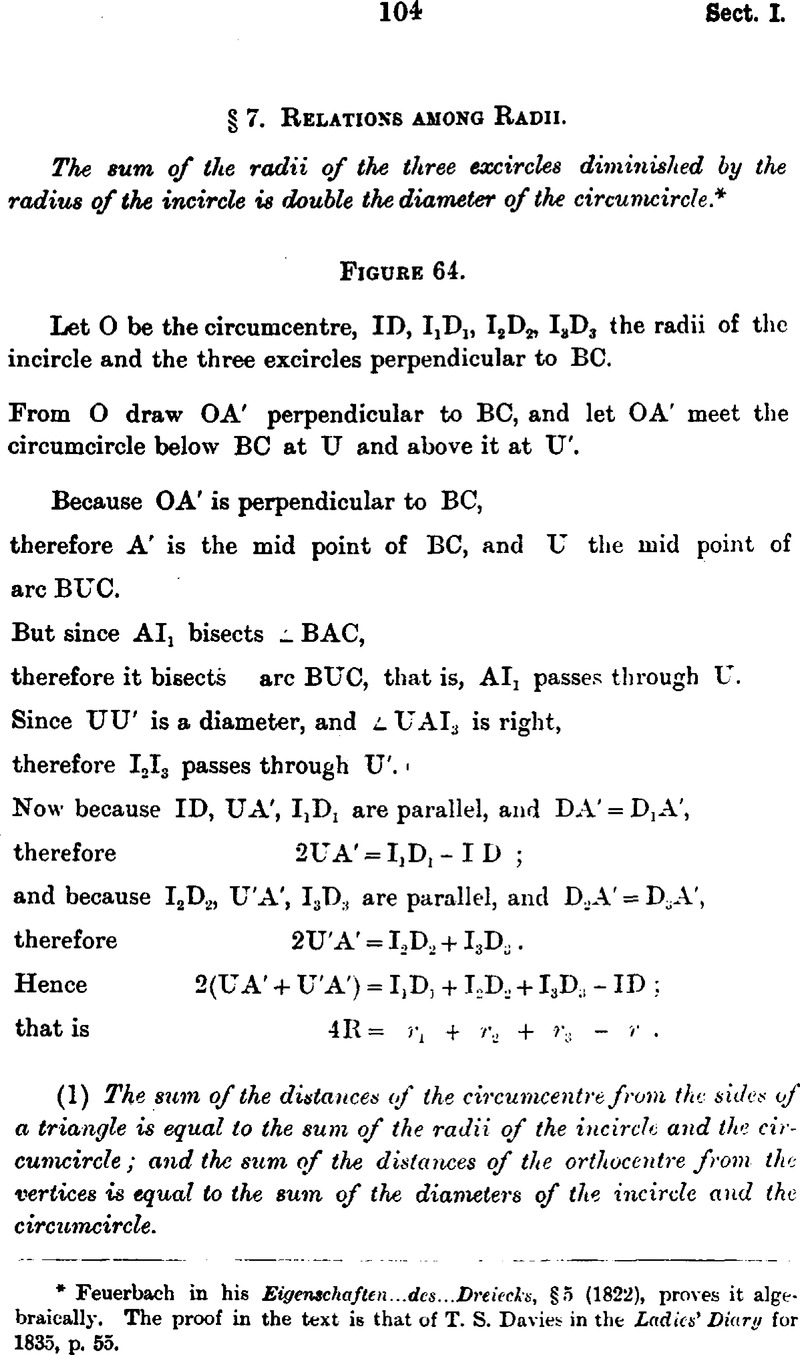No CrossRef data available.
Published online by Cambridge University Press: 20 January 2009

* Feuerbaeh in his Eigenschaften…des…Dreieckss, §5 (1822), proves it algebraically. The proof in the text is that of Davies, T. S. in the Ladies' Diary for 1835, p. 55.Google Scholar
* Hind's, Trigonometry, 4th ed., p. 309 (1841).Google Scholar
† MrMöllmann, Bernh in Grunert's, Arckiv, XVII. 379 (1851).Google Scholar
* MrLemoine, in Journal ie Mathématiques Élémentaira, 2nd series, IV. 217–8 (1885). (6) also is his.Google Scholar
* MrSoméritis, J. of Chalcis in Vuibert's Journal de Mathématiques Elementaires, XVI. 128 (1892). The solution in the text it that given on p. 141.Google Scholar
* Chappie, William in Miscellanea Curioia Mathematica, I. 123 (1746). Euler gave the property in an inconvenient form about twenty years later. A tolerably full history of Chappie's theorem and its developments during the 18th century will be found in the Proceedings of the Edinburgh Mathematical Society, V. 62–78 1887).Google Scholar
* Landen, Jolm in Lucubralioncs Mathematical, pp. 1–6 (1755).Google Scholar
* Matthes, C. J., Commentatio de Proprietatibus Quinque Circulorum, p. 41 (1831).Google Scholar
* The first part is given by MrNéorouzian, in the Nouvelles Annales, IX. 216–7 (1850); the second part occurs in Exercices de Géoméric, by F.I.C., 2nd ed., 506 (1882).Google Scholar
† The first part is given in Nouvelles Annales, XVII. 358, 447–8 (1858), and attributed to Grunert.Google Scholar
* Theorems (21)–(24), (26), (27) are given by Chapple; (28) part of which is given by Chapple, is due to Dr Otto Böklen. See Grunert's, Archiv; XXXVIII. 143 (1862).Google Scholar
† A detailed proof of this statement, if such should be considered necessary, given by DrBesant, W. H. in the Quarterly Journal of Mathematics, XII. 276 1873).Google Scholar
* Feuerbaeh, , Eigenschaften…des…Dreiecks, §50(1822).Google Scholar
* Beecroft, Philip in the Lady's and Gentleman's Diary for 1845, p. 63.Google Scholar